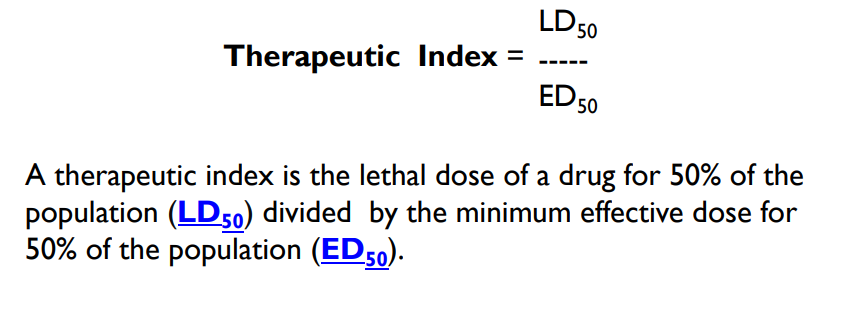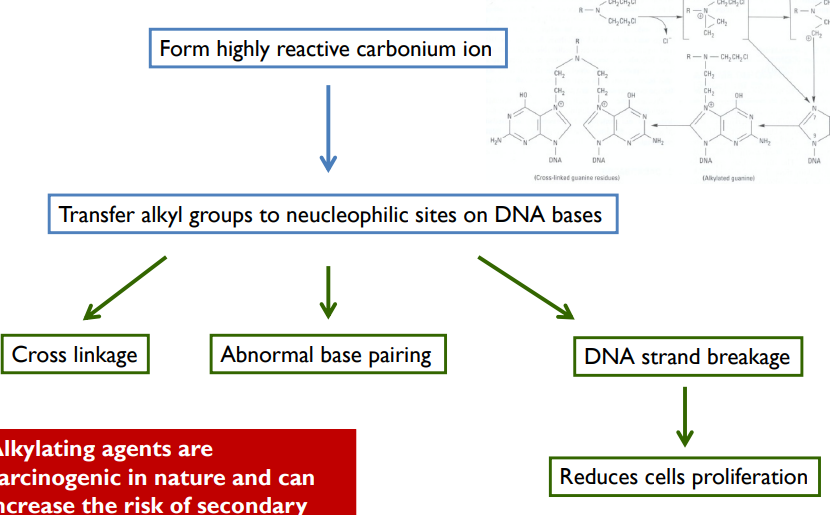Cancer Chemotherapy
1/52
There's no tags or description
Looks like no tags are added yet.
Name | Mastery | Learn | Test | Matching | Spaced |
|---|
No study sessions yet.
53 Terms
What is a Cancer?
Continuous Uncontrolled Growth of Cells
What is a Tumour?
Abnormal Proliferation of Cells
What is the difference between Benign and malignant Tumours?
Benign Tumours stay confined to their original location
Malignant Invade surrounding tissue or entire body
What are the causes of Cancer?
1) Environmental Exposure - Radiation, UV Light, Tobacco
2) Viruses
3) Oncogenes
4) Tumour Suppressor Genes
What are the treatments of Cancer ?
1) Surgery (for localised cancers)
2) Radiotherapy (for localised cancers)
3) Chemotherapy (when the cancer metastasizes)
How do the Chemotherapy Drugs vary?
1) Chemical Composition
2) Route of Administration
3) Type of Cancer Targeted
4) Side Effects
What is Primary Induction Chemotherapy?
Chemotherapy administered in patients with advanced cancer for which no alternative treatment exists.
i.e. Hodgkin's and non-Hodgkin's Lymphoma.
What is Neoadjuvant Chemotherapy?
Use of chemotherapy in patients who present with localized cancer for which useful local therapies (surgery/ radiation) exist but may not be completely effective.
What is Adjuvant Chemotherapy?
Chemotherapy used as an adjuvant to local therapy such as surgery or radiation. It is effective in prolonging disease free and overall survival in patients
What is the main goal of Antineoplastic Agents?
To eliminate the cancer cells without affecting normal tissues
Aim for a therapeutic Index
What is the Therapeutic Index?
Lethal Dose of a Drug for 50% of the Population divided by the minimum effective dose for 50% of the population
LD50 / ED50

How can Chemotherapy be used to manage Cancers?
To achieve cure, a total cell kill must be tried.
Early Diagnosis and Early Institution of Treatment.
Chemotherapy can be combined and intermittent regimens can be used.
Adjuvant and Neoadjuvant chemotherapy can be used occasionally.
Describe the Log Kill Hypothesis
X Axis Time, Y axis Number of Cancer Cells.
Surgical Excision reduces the the number of canel cells thus reducing symptoms. Chemotherapy kills a constant proportion of tumour cell population rather than a constant number of cells after each dose.

Why do solid cancer tumours respond poorly to Chemotherapy?
have a low growth fraction thus respond poorly to chemotherapy and in most cases need to be removed by surgery
Why do Disseminated (ones that spread) Cancers respond well to Chemotherapy?
Disseminated Cancers generally have a high growth fraction.
How do Chemotherapeutic Drugs work?
They work by interfering with normal cell functioning, causing cell death.
Cell Cycle Specific Drugs → Target specific phases of the cell cycle
Cell-Cycle Non-Specific. drugs → they can act on anytime of the cell cycle
List examples of Cell Cycle Specific Drugs
- Antimetabolites (S Phases): Fludarabine, 5-Fluorouracil, Methotrexate
- Taxanes (M Phase)
- Vinca Alkaloids (M Phase)
- Antimicrotubule Inhibitor (M Phase)
- Antitumous Antibiotics (G2-M Phase)
List Cell Cycle Nonspecific Drugs
- Alkylating Agents
- Antitumour Antibiotics
- Camptothecins
- Platinum Analogs
- Anthracyclines.
What do Alkylating Agents do?
Prevent cell division by reacting with DNA and RNA
are Cell Cycle Non-Specific
How do Alkylating Agents work in Chemotherapy?
Form Highly Reactive Carbonium Ion → this transfers Alkyl groups to nucleophilic sites on DNA Bases which can lead to:
1) Cross Linkage
2) Abnormal Base Pairing
3) DNA Strand Breakage → leading to Reduced Cell Proliferation

Alkylating Agents are Cell Cycle Non Specific Chemotherapeutic Agents.
How are Alkylating Agents Carcinogenic?
cause abnormal base pairing therefore can be Carcinogenic and increase the risk of Secondary Malignancies
Which Tumours can Alkylating Agents treat?
Hematologic and Solid Tumours (Ovarian Cancer, Brain Tumour)
Most adverse effects of Alkylating Agents are Generally Dose Related and Occur Primarily in Rapidly Growing Tissues.
What Examples of Alkylating Agents Adverse Effects are there?
1) Bone Marrow Depression
2) Nausea
3) Vomiting
Anti-emetics are often given prior and after alkylating dosing
What examples of alkylating agents are there?
Busulfan → Leukaemias, Lymphomas and Myeloproliferative Disorders
Lomustine → brain tumours
Decarbazine → Malignant Melanoma, Hodgkin Lymphoma, Sarcoma, Islet Cell Carcinoma of the Pancreas
Patients can develop resistance to Alkylating Agents. What can this lead to?
1) Increased Activity of DNA repair enzyme
2) Increase Metabolic Inactivation of the Drug
3) Decrease Influx of the Drug
Platinum Analogues ar Cell Cycle Non Specific Chemotherapeutic Agents.
How do they work?
Form Highly Reactive Platinum Complexes that cause Cross Linkages and DNA Damage. This inhibits cell proliferation
What Example of a Platinum Analogue (CCNS) is there?
1) Cisplatin
What Cancers is Cisplatin used to treat?
Treats Testicular, Ovarian and Solid Tumours.
What are the Adverse Effects of Cisplatin (Platinum Analogues)?
Emesis, Nephrotoxicity, Peripheral Neuropathy and Ototoxicity.
Antimetabolites are Cell Cell Specific Drugs. How do they work and what phase do they act on?
Interfere with DNA and RNA growth
Acts on S phase
What Examples of Antimetabolites used in Chemotherapy?
1) Folates Antagonists (Methotrexate)
2) Purine Antagonists (6 Mercaptopurine)
3) Pyrimidine Antagonists (5 Fluorouracile)
Methotrexate is a Folic Acid Analogue. It is an Antimetabolite that is Cell Cycle Specific.
How does Methotrexate Work?
Binds to the Active Catalytic Site of Dihydofolate Reductase (DHFR)
This inhibits the synthesis of Tetrahydrofolate (THF)
Interfering with Formation of DNA, RNA and key cellular Proteins.
What are the 3 actions of Methotrexate?
1) Cytotoxic (mainly on bone marrow)
2) Immunosuppressive, preventing clonal expansion of B and T Cells
3) Anti-Inflammatory
What are the Adverse Effects of Methotrexate?
1) Megaloblastic Anaemia
2) Leukopenia
3) Alopecia
4) Nephropathy
6 Mercaptopurine is a Purine Antagonist and an Antimetabolite that is Cell Cycle Specific.
How does 6 Mercaptopurine Work?
It is Inactive in its parent form and must be metabolised in its active form.
It inhibits the synthesis of purine nucleotides, its metabolites alter the synthesis and function of RNA and DNA
It does not cross the blood brain barrier.
6 Mercaptopurine is used to treat what condition?
Childhood Acute Leukaemia
What are the Adverse Effects of 6 Mercaptopurine?
Nausea, Vomiting, Fatigue, Stomach/Abdominal Pain, Fever
5 Fluorouracil is a Pyrimidine Antagonist and an Antimetabolite that is Cell Cycle Specific.
Which Cancers is it used in?
Stomach, Colon, Breast, Ovarian, Liver and Skin Cancer
How does 5 Fluorouracil work?
Interferes with DNA synthesis
What are the Adverse Effects of 5 Fluorouracil?
Nausea, Vomiting, Headache, Mood Disorder, Cardiotoxicity, GI Ulceration and Bleeding, Vein Pigmentation, Local Pain, Burning, Dermatitis.
How do Vinca Alkaloids work?
Are Cell Cycle specific
Disrupts assembly of microtubules.
Results in mitotic arrest in metaphase → stops cell division → cell death
What examples of Vinca alkaloids (CCS) are there?
Vincristine → for Hodgkin’s and non-Hodgkin’s lymphoma, lymphosarcoma
Vinblastine → Hodgkins disease and lymphoma, breast and testicular cancer
Taxanes are Cell Cycle Specific Chemotherapeutic Drugs. How do they work
Inhibit mitosis and cell division
What example of Taxanes is there?
Paclitaxel
Used in a broad range of solid tumour (i.e. advanced breast cancer, ovarian cancer , head and neck, prostate and bladder cancer).
Metabolised by liver → dose reduction for pts with liver diseases
Adverse effects include nausea, vomiting, hypersensitivity, myelosuppression, and hypotension.
How do Antitumor Antibiotics work?
They Bind to DNA through intercalation between specific bases. Where they can:
Block synthesis of RNA, DNA or Both.
Cause DNA strand Scission
Interfere with Cell Replication
Doxorubixin (Anthracycline) is an Antitumour Antibiotic. How does it work?
Used against breast, ovary, testicles, stomach, thyroid and bladder cancer.
Often used in combination with other anticancer drugs.
Generates free radicals leading to cardiotoxicity.
Mitomiycin C (CCNS) is a Antitumour Antibiotic. How does it work?
Used in resistant cancers of stomach, colon and rectum.
Its metabolite act like alkylating agent that cross-links DNA. It is active in all phases of the cell cycle. It is the best available drug to use in combination with radiotherapy to attack hypoxic tumour cells
Bleomycin is an Antitumour Antibiotic. How does it work
It is a small peptide, binds to DNA resulting in single- and double-strand breaks,
leading to inhibition of DNA biosynthesis. Causes accumulation of cells in G2 phase.
Used for lymphomas, head and neck cancer. Advantage can be given SC, IM or IV.
Eliminated via renal excretion. Can lead to Pneumonitis, hyperpigmentation and spares
bone marrow.
What Hormones and Antagonists used in Chemotherapy?
1) Glucocorticoids
- Used in acute leukemia and lymphomas due to their marked lympholytic effect
2) Estrogens
- Physiological antagonists of androgens, so used to antagonize the effect of androgens in androgen dependent prostate cancer
3) Estrogens Antagonists
- Used in breast cancer. Selective Estrogen Receptor (ER) Modulators, or ER down regulator. Adverse effect, hot flushes, vomiting, menstrual irregularities.
What is Spread of Cancer to Bone associated with?
1) Pain, Hypercalcaemia, Anaemia
2) Increased Risk of Infection
3) Compression of the Spinal Cord and/or Nerve Roots
4) Decreased Mobility and Skeletal Fracture (Catastrophic)
What do Bisphosphonates do?
inhibit osteoclasts
• Slow down the rate of growth of bone crystal and their resolution
• Reduce morbidity from bone metastasis by reducing skeletal events.
• Lower calcium levels.
How do Bisphosphonates cause Gastrointestinal Toxicities?
bind to calcium in the diet can cause gastrointestinal toxicities such as
nausea, vomiting, indigestion, oesophagitis, and diarrhea
How can patients become Resistant to the Drugs used in Chemotherapy?
Highly specific to a single drug, mainly based on a specific change in the genetic
machinery of a given tumour cell
Multidrug-resistant phenotype can occur, resulting in enhanced drug efflux and
reduced intracellular accumulation of a broad range of structurally unrelated
anticancer agents
Drug is not metabolized to an active form; drug is inactivated; drug target is increased